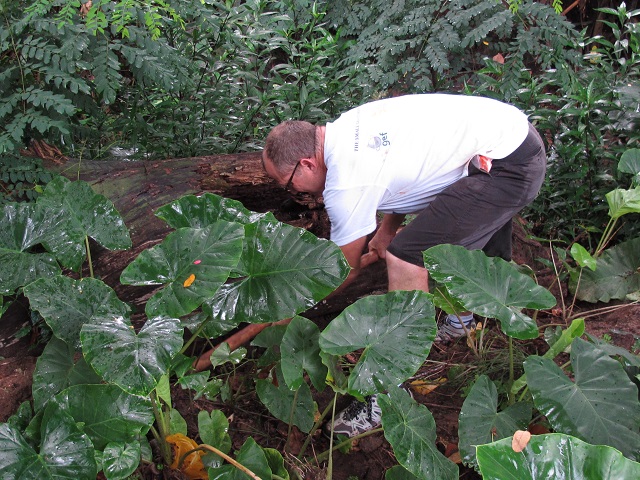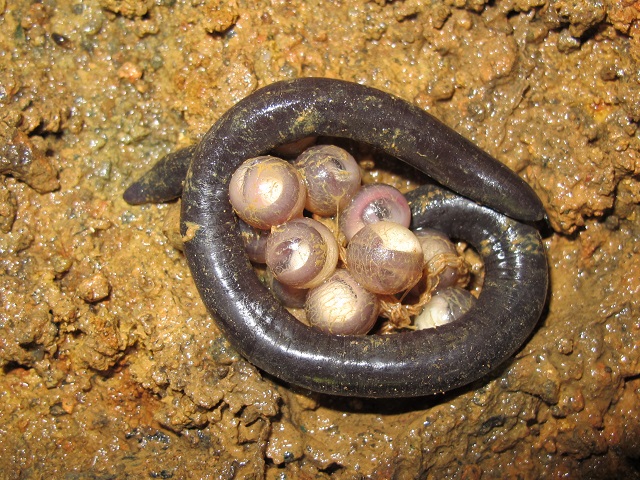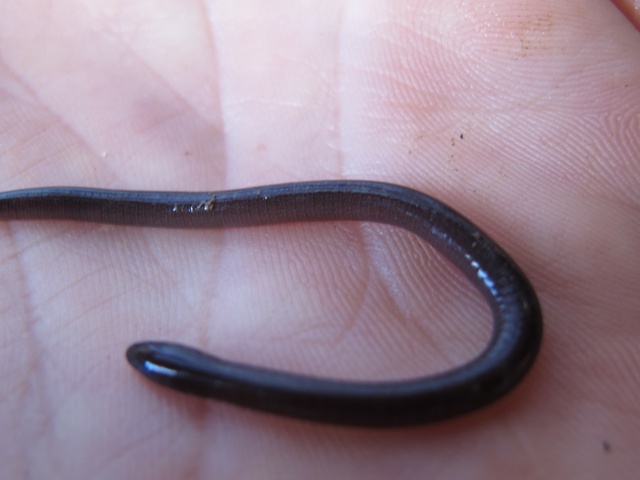A worm? A snake! Nope, it’s a Seychelles caecilian
(Seychelles News Agency) - Farmers sometimes call them black worms. Panic-stricken residents think they are snakes. But they are both wrong: The caecilian is an amphibian.
The caecilian – a limbless, serpentine species that breathes with its skin and lives in moist ground -- was the subject of a research project in the island nation of Seychelles last year that focuses on the conservation of one-of-a-kind species that are often in danger of extinction.
The research project was sponsored by the Darwin Initiative as part of the Evolutionary Distinct Globally Endangered (EDGE) programme, which began in 2012 and ended last April. Its goal: To provide investment, technical expertise and targeted training in conservation, ecology and taxonomy to improve knowledge, management and conservation of 12 EDGE species endemic to Seychelles.
 |
| Charles Morel, EDGE fellow digging for the Caecilian – Caecilian thrive in moist areas. (Charles Morel) Photo License: CC-BY |
Charles Morel, caecilian EDGE fellow and herbarium curator at the Seychelles Natural History Museum, told SNA in an interview that he once thought the caecilian was a worm.
“It’s a point of pride to have such a fascinating creature that is endemic to our islands,” Morel said.
The biggest threat to the caecilian is climate change, Morel said. So if one year the islands don’t receive enough rain, the caecilians won’t survive.
Aside from living in moist ground, the caecilian can also be found in streams. It has a vertebrae and solid skull, yet its blackish-greyish and sometimes reddish body is similar to a worm. The latest research found that the caecilian can reach 46 centimeters in length. They lay eggs and come in six different species in the Seychelles.
 |
|
The blackish-grey caecilian – sometimes reddish in colour lay eggs. ( Charles Morel) Photo License: CC-BY |
Farmers who have encountered them in the Seychelles often call them “gro lever nwanr,” meaning big black worm.
Morel said that development on Seychelles’ islands is another a threat to the caecilian. He told SNA that the research project was a good initiative because now there is available information on the distribution of the caecilian that can assist with its conservation.
“We can go and tell the government when they are planning a project … that there are many caecilian species in this area,” he said.






